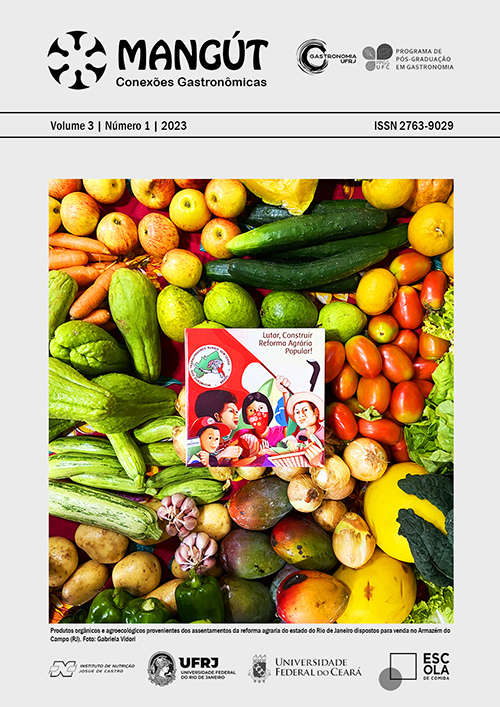Popular recognition and food uses of the Brazilian berry known as “camarinha” – Gaylussacia brasiliensis (Spreng.) Meisn.
DOI:
https://doi.org/10.70051/mangt.v3i1.53897Keywords:
Gastronomy, Brazilian blueberry, BiodiversityAbstract
Brazil, holder of the greatest plant biodiversity in the world, presents several species with food and nutritional potential that are still underused. Among them is Gaylussacia brasiliensis, a shrub known as "camarinha" or "Brazilian blueberry", which provides small purplish fruits. In this context, the work aimed to evaluate the national popular recognition of the fruit, through a questionnaire applied to 603 people (Sampling error = 4.08%; p<0.05) from five Brazilian Regions. The work also analyzed the ethnobiological knowledge about the food use of the plant in the community of the District of Campeche – Florianópolis (SC). The results show that the “camarinha” is an unknown fruit by the Brazilian population, little present even in the daily life of local traditional communities that have used the fruit in the past. The ethnobiological knowledge raised in the case study shows a "forgetfulness" of the fruit and its uses over the generations, as well as the decrease in its area of natural occurrence. However, it is a fruit with great nutritional, gastronomic and commercial potential and can be considered a Brazilian red fruit due to its characteristics.
Downloads
Published
Issue
Section
License
Copyright (c) 2023 Ana Clara Stein Nicácio, Liz Cristina Camargo Ribas

This work is licensed under a Creative Commons Attribution 4.0 International License.
Autores que publicam nesta revista concordam com os seguintes termos:
- Autores mantém os direitos autorais e concedem à revista o direito de primeira publicação, com o trabalho simultaneamente licenciado sob a Licença Creative Commons Attribution que permite o compartilhamento do trabalho com reconhecimento da autoria e publicação inicial nesta revista.
- Autores têm autorização para assumir contratos adicionais separadamente, para distribuição não-exclusiva da versão do trabalho publicada nesta revista (ex.: publicar em repositório institucional ou como capítulo de livro), com reconhecimento de autoria e publicação inicial nesta revista.
- Autores têm permissão e são estimulados a publicar e distribuir seu trabalho online (ex.: em repositórios institucionais ou na sua página pessoal) a qualquer ponto antes ou durante o processo editorial, já que isso pode gerar alterações produtivas, bem como aumentar o impacto e a citação do trabalho publicado (Veja O Efeito do Acesso Livre).



